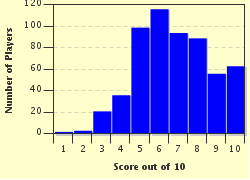Quiz Answer Key and Fun Facts
1. Perhaps there is no perfect sphere in nature, however soap bubbles and small raindrops come close. What is the main factor making them spherical?
2. Why do leopards have spots?
3. The Romanesco broccoli (pictured) shows self-similar form. What is the name of the pattern normally associated with this?
4. Who connects the Enigma machine with the spots on a ladybird?
5. An example of a spiral found in nature is that of the male flower on the sago palm. Which Italian mathematician's numbers can be used to describe this particular spiral?
6. The tiger lends its name to a larger-scale natural pattern known as tiger bush. The photo shows a five square kilometre section in Niger with each band of trees separated by 60 to 120 metres of bare ground (the white stripes). The bands tend to follow the contours of the land. Which of the following contributes to the pattern forming?
7. Honeybees are known for their hexagonal-celled honeycomb. What is the term for these mosaic patterns?
8. The blue-striped blenny (Plagiotremus rhinorhynchos) is a successful predator. How does its colouring help it survive?
9. Which word connects a flapping butterfly with the Conus textile shell (shown in the photo)?
10. The Nautilus shell (the photo shows a cross-section through one) is a natural example of a logarithmic spiral. This is one of the many natural forms noted in the ground-breaking work "On Growth and Form" (1917). Which Scottish pioneer of mathematical biology authored the book, which emphasized the role of physical laws and mechanics in the development of organisms?
Source: Author
suomy
This quiz was reviewed by FunTrivia editor
rossian before going online.
Any errors found in FunTrivia content are routinely corrected through our feedback system.


